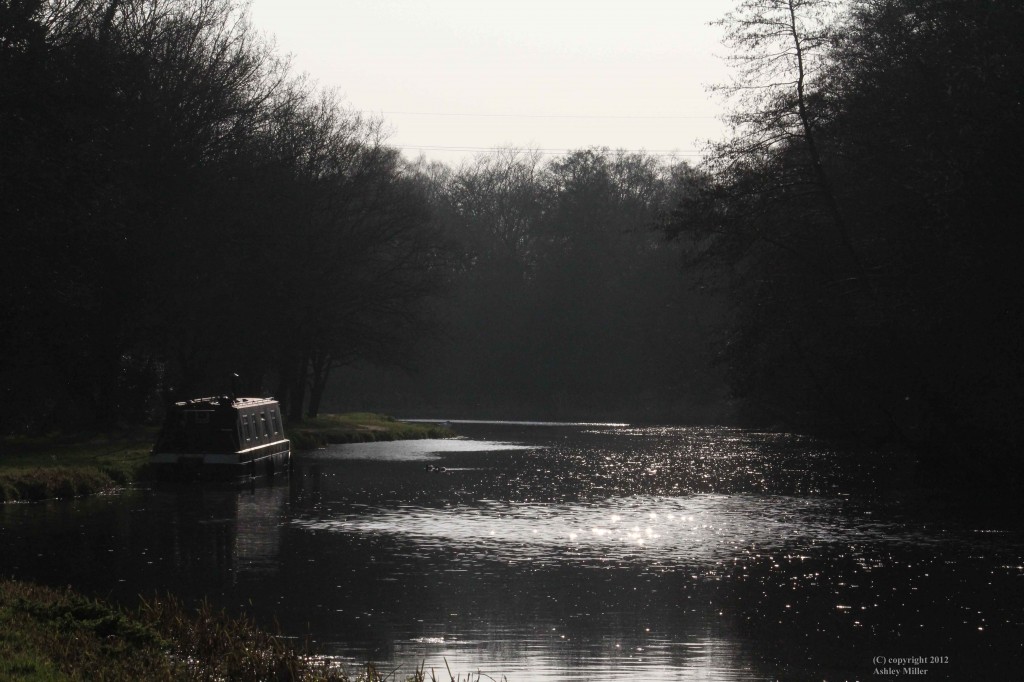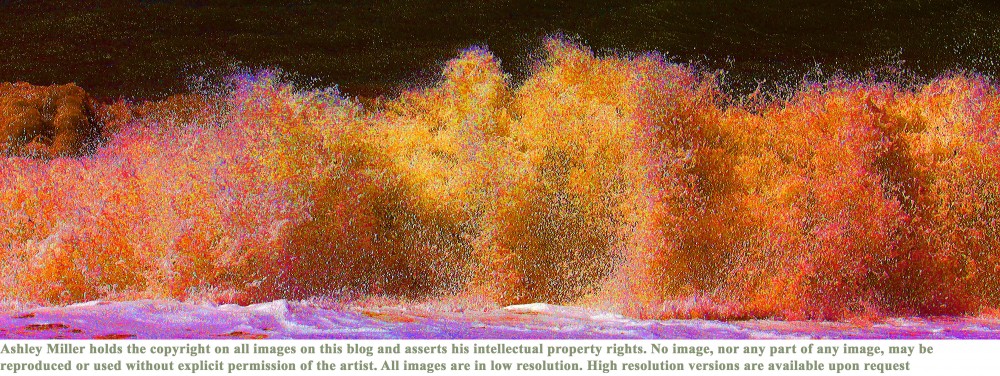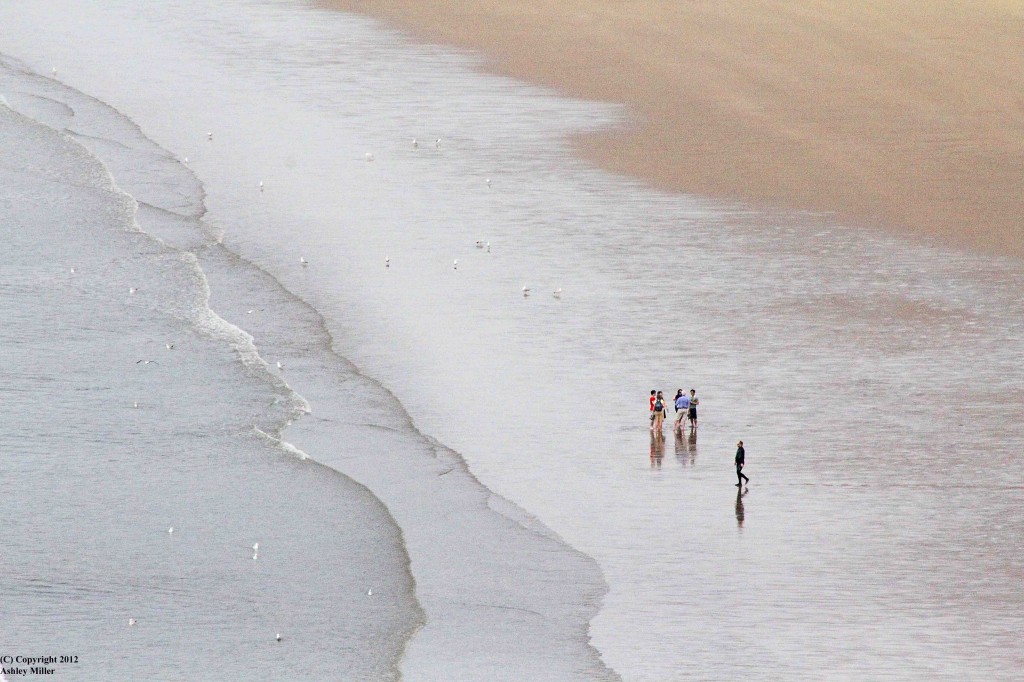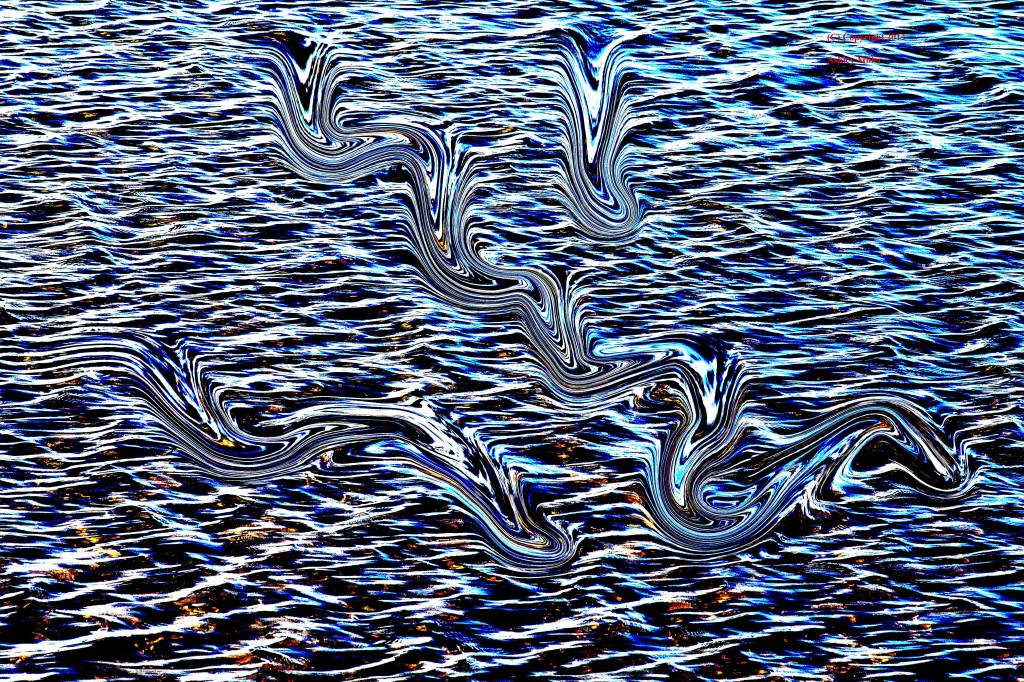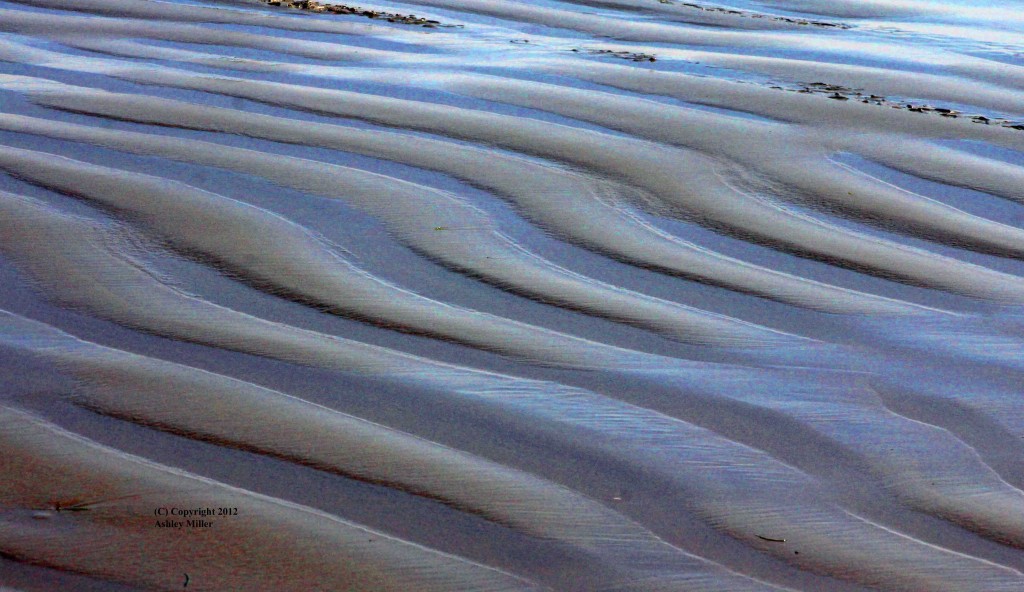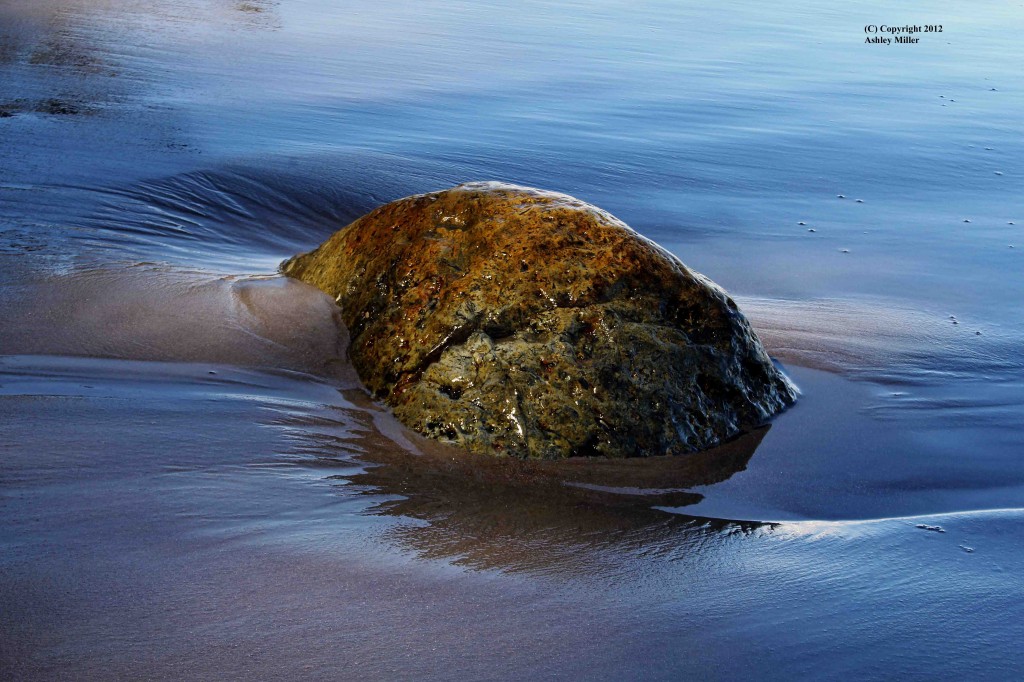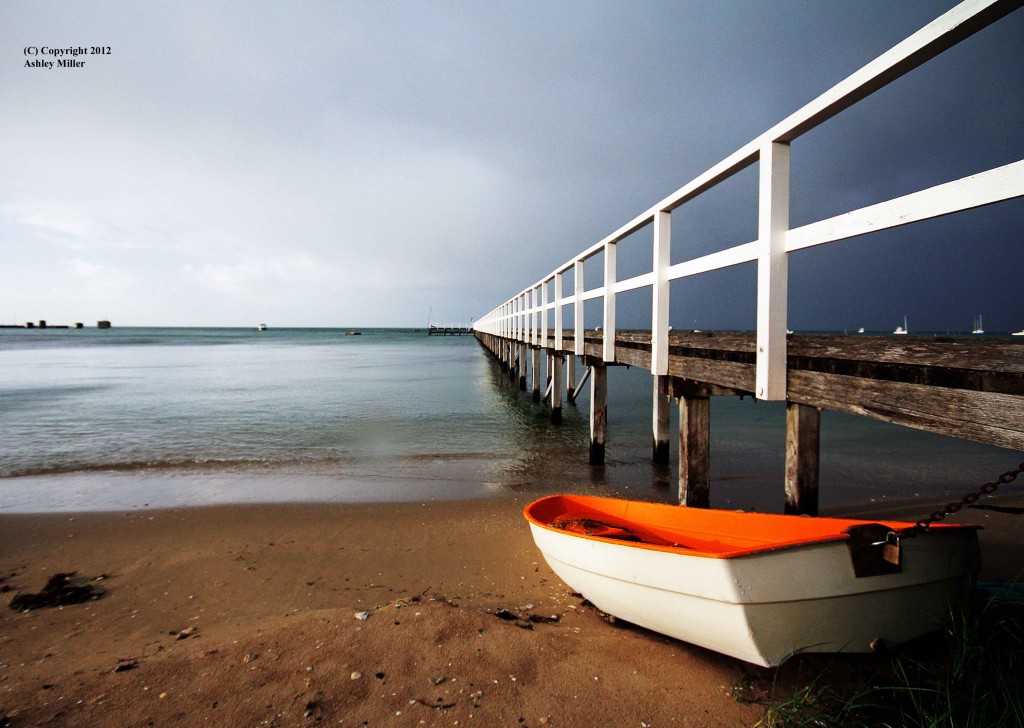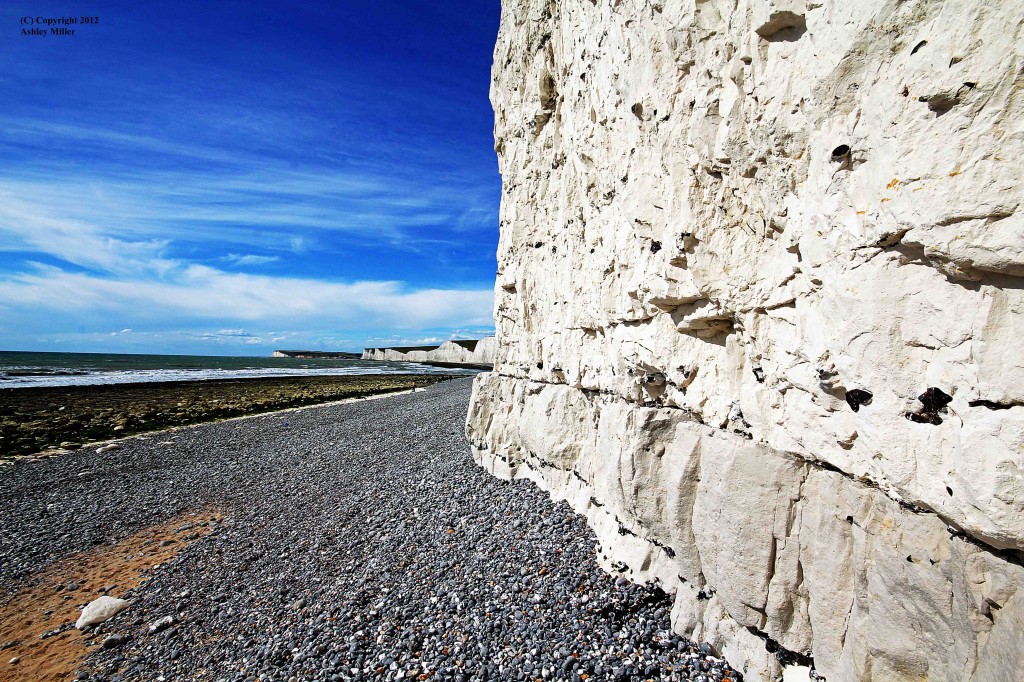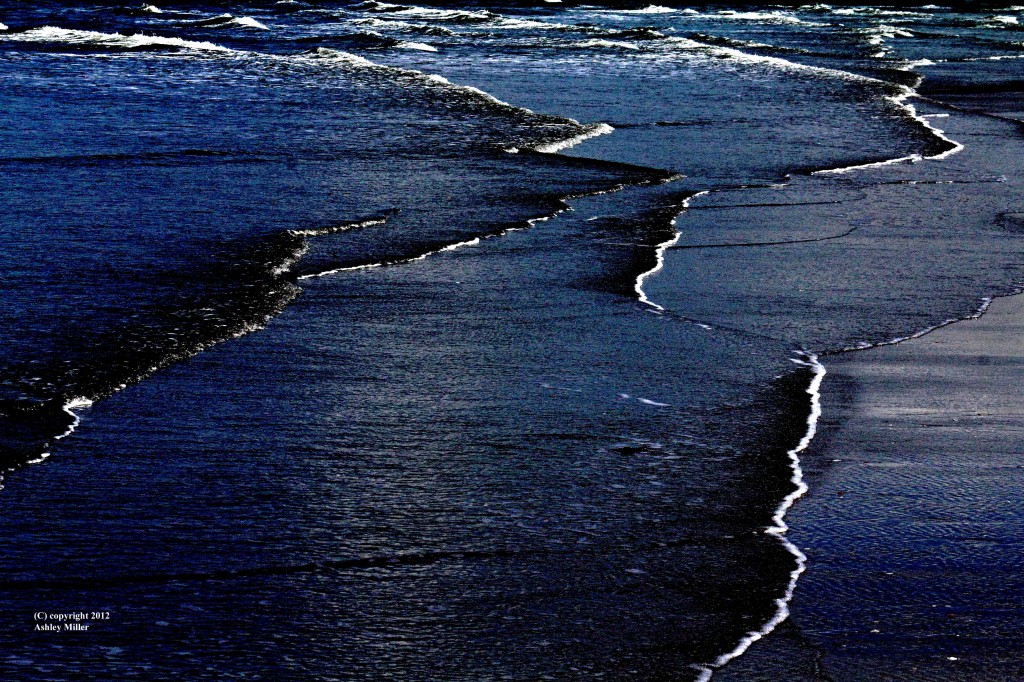Now I am a person who owns more cameras than is possibly humanly decent. 14 at last count; but only 3 in active use; I just cannot bear to part with old friends. And my newest friend is a Canon 60D; usually to be found with a 55-250 IS zoom on, though from time to time a 10-20. And my standard setup is to shoot 3 bracketed shots, +2/3,-1/3,-1.3. Which is fine except when shooting fast changing subjects such as waves, when I switch to continuous shooting, try a few trial shots to get the aperture right, and then just let it rip. But back to the standard … and it is usually the underexposed shots that appeal to me; strong contrasts, strong colours (just call me Mr Kodachrome). Then one day I was at Rhossili (S Wales) and overlooking the bay. And somehow it was the overexposed shots that appealed, giving an ethereal lightness to the patterns of the long waves, the sand and the groups of people. This image is one of many from that day; and there is that added intriguing question of the man in black, fully clothed, shoes, and walking purposefully into the sea. Shades of the Rise and Fall of Reggie Perrin (the original with Leonard Rossiter is my preference). Oh and it was taken with an old 70-350 (from my 35mm days). And the lesson; the usual isn’t always right.
Monthly Archives: November 2012
Telling stories
Life should be about change and learning and growth. About two years ago I went to Australia for the first time; the driver was spending time with some old friends, the icing was to be seeing something of a new continent. It was a time when my tastes were shifting, discovering what I liked rather than what others expected me to like. Part of this was a change in my tastes in art, moving from water colours and prints to seeking something more vibrant. That was a life enhancing trip in so many aspects and with the encouragement of those I met, together with that of my kids, I began to take a lifelong hobby more seriously, and to look for and notice the textures and patterns in nature; something that I had occasionally captured and only occasionally observed. And I found a new continent with different colours and textures and patterns to anything I had seen before. And I got to see aboriginal Australian art … they prefer to be described as aboriginal Australians or indigenous Australians, not aborigines, and after 60000 years I think they have earned that right. Their painting evolved as a way of teaching each generation, originally on rock surfaces or in the sand and only recently transferred to canvas. And their paintings tell their stories, of themselves, of their landscapes, of ancestor creator beings from the dreamtime; of how their world came to be, of their place in it. I looked in amazement on the patterns and colours and power of their art. I discovered that pushing the colour Plus occasionally a few other tricks, in PSE, of the more purely textural/pattern images gave a similar feel. Obviously it does not tell stories in the same way, yet this blog tells fragments of my story and my art; and Australia and aboriginal art are part of my story. This is one example. It started as a photo of ripples on a mountain lake. There will, from time to time, be others.
Wet knees
As I have noted earlier a beach changes at every tide. The patterns and shapes, combined with the light will never be the same from one day to the next. The variation is fascinating; Gaia never wears the same dress and make-up twice and it all provides material for the image maker. What we have to do is observe and think. This was taken at low tide towards the end of the day (when the light is always more interesting) using a a mid-range telephoton (50-250), small aperture, and crouching down into the wet sand; sometimes you have to get wet knees to get the angle right. Hope you enjoy.
Never forget a spare memory card (or roll of film)
I have recently been to a few meetings of a camera club. And me being me have already managed to have arguments over whether one should take a few carefully selected shots, getting it right in the camera first time, or blast away, trying slightly different angles, exposure bracketing, shutter speeds, apertures, plate sensitivity, framing etc and then adjust, or even push to extremes, in PSE. No surprises, I, after some time getting used to the whole concept of digital photography (digital camera, digital storage, digital manipulation) am in the latter camp. And yes I used 35mm film for many (30+) years (and 127 and 120 … still have a 120) where each shot had to be carefully considered in order to make use of your limited film stocks (for any one outing); but now I believe in playing to the strengths of the equipment I use, including my brain/eye, and like my brain/eye take huge numbers of shots; and then review them and create images from the best of them. And even then I get caught out sometimes. This image started life on a beach near Hobart. It is a lovely place and when the fine sand is wet it has an extraordinary ability to reflect the colours of the sky; so yes, it really was this colour; it was towards the end of the day. And I love the textures and shapes in the wet sand, and the vibrant colour of the rock … but I had forgotten to take a spare memory card with me and the card was almost out of space (and full of prized photos) so I only took 2 of this rock. Dumbo Ashley. Then when I went back some 8 months later, hoping to take more, the rock was gone; time, tide and waves had moved it. So remember, beaches change with every tide, take a spare memory card, and be willing to experiment.
The other side of the pier
Quiet before the storm
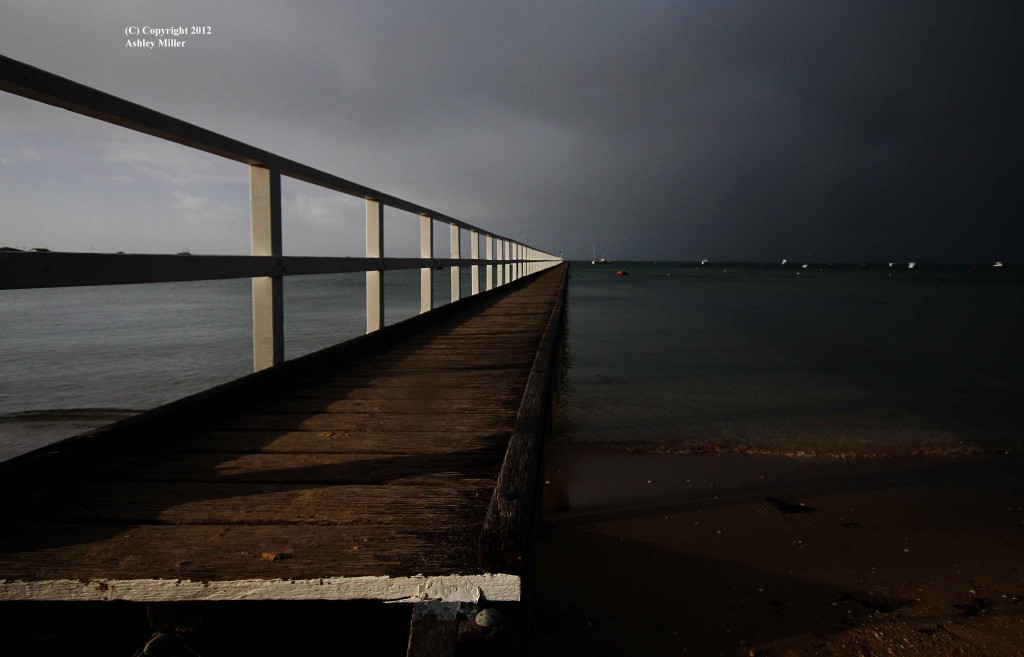 Another image that started with a photo taken using the 10-20 lens; actually it required very little tweaking; some adjustments to verticals and horizontals though (see below). It was taken on a day of contrasting weather on the Mornington Peninsula in Australia (near Melbourne). Bright sunny periods were broken by fierce squalls and downpours; always windy though, with big rollers ocean side of the peninsula and strangely quiet water bay side. The image shows the next squall approaching, bay side, and I feel I have captured some of the ‘quiet before the storm’ sense. Being up close to the pier created challenges for horizontals and verticals, yet the power of the pier and the lines converging to the horizon appealed. As often, there is no obvious subject of the image; the image is about patterns, textures and light. And the moral … even without an obvious subject there may be opportunities to take the non obvious; think, always, think.
Another image that started with a photo taken using the 10-20 lens; actually it required very little tweaking; some adjustments to verticals and horizontals though (see below). It was taken on a day of contrasting weather on the Mornington Peninsula in Australia (near Melbourne). Bright sunny periods were broken by fierce squalls and downpours; always windy though, with big rollers ocean side of the peninsula and strangely quiet water bay side. The image shows the next squall approaching, bay side, and I feel I have captured some of the ‘quiet before the storm’ sense. Being up close to the pier created challenges for horizontals and verticals, yet the power of the pier and the lines converging to the horizon appealed. As often, there is no obvious subject of the image; the image is about patterns, textures and light. And the moral … even without an obvious subject there may be opportunities to take the non obvious; think, always, think.
Never give up, never surrender
Well I am new to blogging, old to photography (50+ yrs) … and new to Photoshop Elements; PSE. And I love PSE’s ability to allow you create interesting, challenging and exciting images from your base photograph. Also its abilities to correct flaws in the photograph; and I am still learning about both. Now the West Wittering 1 image (below) was shot using a 10-20 ultra-wide zoom, set at 10, crouching close to the beach. And no matter how much I tried a certain amount of distortion of verticals crept in; introduced by the slightest deviation, at that setting, from holding the camera precisely flat & horizontal. Camera designers please note, a plumb line and spirit level indicator in the viewfinder would be useful. Yet the image was close, and it appealed to me, even with the slightly distorted groyne pillars (made them look a bit like Easter Island statues J ) . Then I noticed an item under the ‘Filter’ menu … ‘Correct Camera Distortion’ … played with it a bit and whoopiedoo I can now ameliorate that vertical distortion. The moral is to never stop learning, never give up, never surrender … I can improve.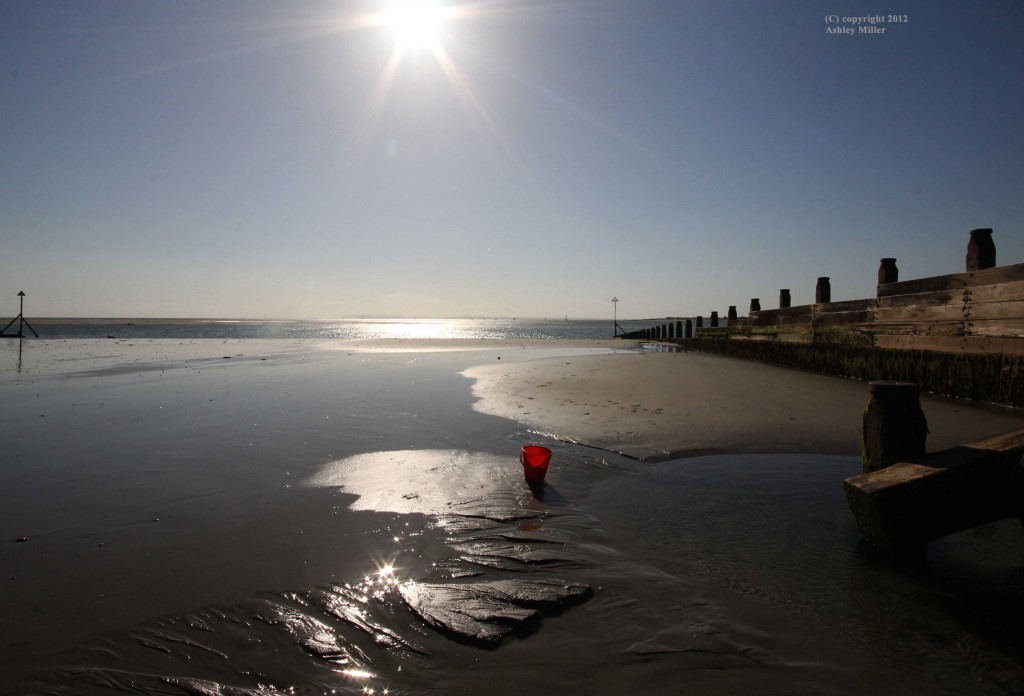
Convergence
This was taken at Birling Gap on the south coast of England. I used an ultra wide zoom, 10-20, set to 10 and was pressed close up to the cliff face. The zoom creates the exaggerated convergence of lines and the view had multiple bands of colours from the cliff, various points on the beach, tidal rocks and sea. A little touch in PSE to control the contrast in the cliffs and Gaia had done the rest. Beautiful
BTW If anyone wants to try the same spot please be careful; you can see huge boulders where sections of cliff have come away; I took my chances and it is up to you how you manage yours
Textures 1
River Wey1
One day in Spring earlier this year I decided to go for a walk on the River Wey Navigation (near Guildford, Surrey, UK). And of course I took my camera with me. When I got home the results looked quite disappointing. What I took to be a bright day was actually a misty moisty day. The colours were washed out, there was no contrast, even the patterns and reflections looked dull. Many photos got deleted yet some I continue to work on; feeling that there was something there. The photograph below is the original; muted colours, sky washed out but yet I liked the composition. So I darkened the sky in the hopes of bringing out fluffy Spring clouds and blue skies. What I got were the power cables stretched across the river that my eye/brain had edited out. Almost gave up … but then I cropped it, which gave the boat more prominence and lost the power cables; but still washed out. So I flipped it over to black and white; that gave it much more impact and a bygone days feel. So then I gave it tints; sepia, green and blue. Sometimes you have to give up on an image; sometimes you have to persist. I hope you like the result (original first then the processed image)